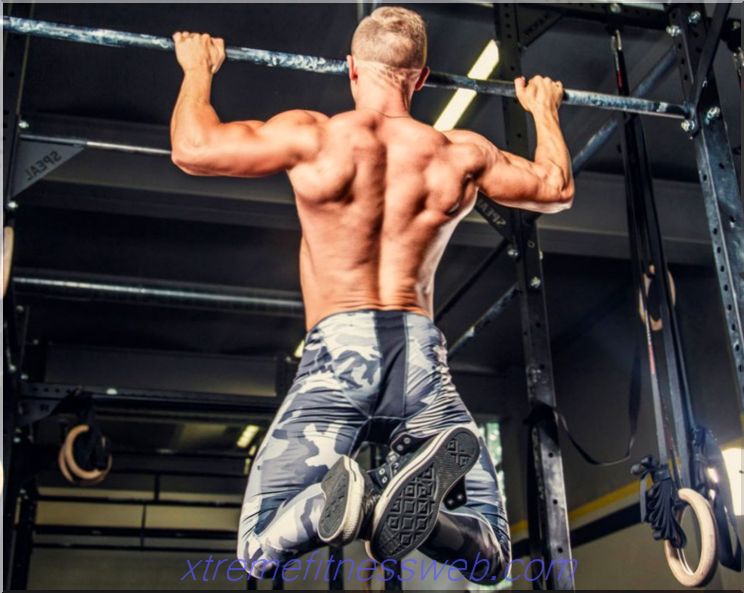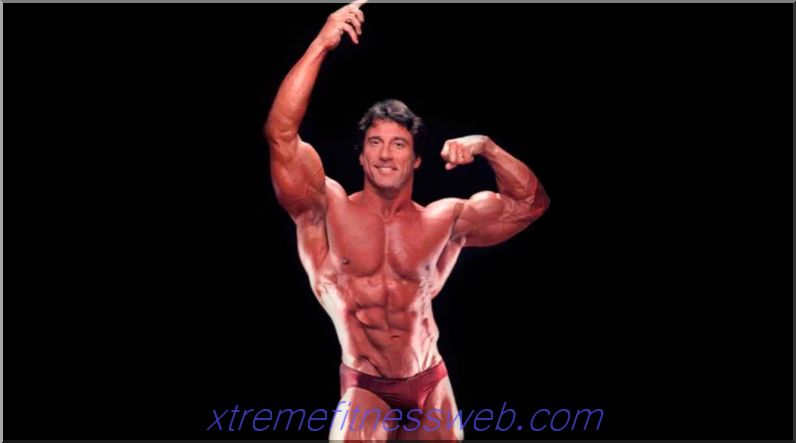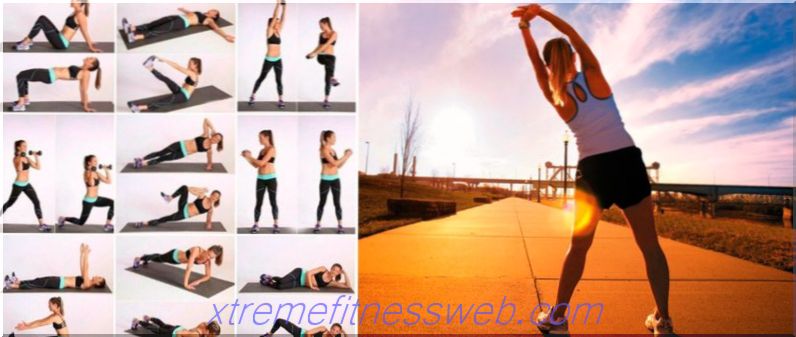- The benefits of exercise
- What muscles work
- Types of shrugs with a barbell
- Execution technique
- Tips
- Application

Making barbell shrugs is good for everyone. Yes, even fitness young ladies and office workers. The latter - especially, because the movement improves cerebral circulation, makes you think faster and helps get rid of kyphotic posture. Yes, if you overdo it with scars, the neck will become visually shorter and thicker. But for a bodybuilder, that's a plus. And for an athlete of extreme sports - also an option to maintain health, because if the neck is reliably protected by muscles, getting injured will be more difficult. Shrugs with a barbell are a little more difficult to do than with dumbbells, but it's worth it.
Content
- 1 Benefits of Exercise
- 2 What muscles work
- 3 Types of shrugs with a barbell
- 3.1 Shrugs with a barbell standing
- 3.2 Shrugs with a barbell behind
- 3.3 Shrugs lying on a bench
- 4 Technique
- 5 Tips
- 6 Application
The benefits of exercise

The trapezius muscle not only helps us raise and lower the shoulders, but also allows us to bring the shoulder blades to the spine and turn the shoulders apart. It helps in breaking down all types of weights from the floor, and stabilizes the shoulders when we pull ourselves up or pull the barbell to the belt. Strong trapezoid is a good “helper” in blowing up, taking on the chest and other weightlifting movements.
Exercising trapezium with the help of scrubs helps to get rid of the feeling of stiffness in the shoulders and back, which haunts those who are busy with office work, or drive a lot. This movement allows you to improve blood circulation throughout the top of the body, and nutrition of the brain. Sometimes a simple addition of scrubs to the training plan relieves headaches better than any manual therapy.
Applied sports aspects of exercise are significant. Without work on the trapezius muscle, it is difficult to imagine a high-quality “assembly” of the back in squats and bench presses, as well as work in traction. The trapezius muscles help the athlete to perform all types of basic exercises in which the back is involved. It is difficult to imagine the training of shoulders in bodybuilding without working out the trapeze, because with an undeveloped trapezoid figure, you will never be harmonious.
Important: Strong neck muscles are important in wrestling or extreme sports. Athletes of these species may include shrugs in general physical fitness to protect the cervical spine from injuries and reduce the risk of spinal injury.
There are no complete contraindications, with the exception of two cases:
- Violation of the outflow of venous blood (pathology of the valves of the veins);
- Severe thoracic scoliosis
Domestic sources also add hernias in the lumbar region, Americans are not so radical, they believe that hernias are not a hindrance, it’s enough to strengthen the rectus abdominis muscle and muscles along the spine.
For women, there are two options. In power sports, you just have to put up with a slight increase in trapeze. Anyway, pumping something really huge there will not work, and the puny shoulders of the model will not withstand the weight that girls usually squat. But for those who are engaged simply in fitness, it makes sense to do exercises on the trapezius muscle not in failure mode, and perform about 20-25 repetitions in order to achieve fatigue, but not failure. So the muscles will not grow significantly, and hypertrophy can not be achieved.
What muscles work

Shrugs work through the entire muscle mass of the upper body:
- Trapezius muscle;
- Rhomboid;
- Small pectoral and intercostal;
- Scapula muscle
As stabilizers specifically in the shrugs with the barbell, the muscles of the legs, the press and the body work.
The trapezius muscle consists of three segments
- The lower presses the bottom of the shoulder blades to the back;
- Medium - scapula to the spine;
- Upper - directly raises and lowers the shoulders
Types of shrugs with a barbell
Different types of exercises involve different functional areas of the trapezius muscle. Each kind of exercise brings a certain benefit.
Standing Shrug

This movement is also called shrugs with a barbell in straight downcast arms. For the most part, the movement helps to work out the trapezius muscles in their upper segment. This is a classic "trapezoid exercise" that allows you to achieve hypertrophy. The movement consists in moving the bar up and down along the vertical of the body.
Shrugs with a barbell behind his back

Some athletes believe this movement is aimed at the development of the posterior bundle of deltoid muscles, but this is not entirely true. The delta works when bending the arms at the elbows, if the movement is limited only by raising the shoulders, the goal will be exclusively the trapezoid, and all of its bundles, since when holding the projectile behind his back, the person will collect shoulder blades to the spine in any case.
Shrugs lying on the bench

This is to some extent a universal movement. It helps to work out all the bundles of deltoid muscles, and allows you to adjust the level of load due to the inclination of the back of the bench. Shrugs allow you to actively engage in the work and the rhomboid muscles due to the fact that the shoulder blades must be kept reduced. This version of the movement allows you to develop muscle quality and improve posture.
Many athletes prefer to perform this exercise with a special block handle, or with dumbbells. The bar may not correspond to the anatomical features, its movement along the body may be difficult. Training with a barbell allows you to work out stabilization, and teaches a person to perform elements of weightlifting exercises, but can negatively affect the health of the joint.
Execution technique

- Spread your legs shoulder-width apart and grab the bar bar with your upper grip. The gap between the palms is slightly wider than the shoulders.
- Fully align your back - straighten your shoulders and chest, bend slightly in the lower back, raise your head to parallel with the floor. In the initial position, the arms are straightened, the back is in a vertical plane, the deflection of the spine is natural, S-shaped, and the gaze is directed strictly forward.
- Inhale and, holding your breath, tighten the trapezium, raise your shoulders up, towards the ears. Imagine that you just shrug when you are asked about something, and you do not know what to answer him.
- Do not bend your arms, bend your torso or squat. Your main task is to raise your shoulders in a vertical plane as high as possible while keeping all the other parts stationary.
- Raising your shoulders extremely up, exhale and for a couple of seconds try to fix the shoulders in this position.
- Slowly lower your shoulders to their original position.
Tips

- Throughout the set, keep your back straight posture: shoulders laid back, chest straightened, back straight and slightly bent in the lower back. If you find it difficult to keep your shoulders back, do dumbbell shrugs only.
- To achieve the maximum reduction in trapezium, perform shrugs with a barbell so that the shoulders rise as high as possible.
- Always stop breathing while lifting your shoulders. It is much easier to stabilize the correct position of the spine and focus on reducing trapezium.
- The task of the exercise is the upper part of the rhomboid and trapezius muscles, which respond well to loads and quickly build up, especially in width and up, which is optically manifested in the form of a swollen neck and a distinctly convex top of the back against a background of swollen shoulders. Naturally, this emphasizes the strength of the figure, but only ... in men. As for the female figure, here the overdeveloped trapeze can radically deprive her of all her attractiveness and femininity. Therefore, we strongly recommend that girls do not get involved in barbells and even exclude them from their training list.
- The working weight should be feasible, giving the opportunity to raise the shoulders extremely up. An excessively heavy bar will fatally reduce the amplitude of movement and at the moment of lowering your shoulders will force you to reflectively forward them, which risks rounding the spine and can lead to injury.
- During the entire exercise, the shoulders only move up and down. No rotational movements - this is dangerous, as heavy weight from trapezium passes to the shoulder joints.
- Throughout the approach, look only in front of you. Lowering the chin, you risk bending the spine. By tilting your head to the side, you create all the conditions for the disproportionate development of the trapezium, which ultimately leads to a curvature of the cervical spine.
Application

Intended: Everyone, from beginner to professional.
When: At the beginning of a trapezoid workout. In the middle of a workout, do dumbbell and / or barbell shrugs and chin pulls.
How much: 3-4 sets of 10-15 repetitions.
Sports briefing: In bodybuilding, shrugs with a bar are performed in order to increase the volume of the top of the neck and back, to draw a dividing line between the deltas and trapezes.
Regular execution of a shrag with a bar will improve your skills in volleyball (throws and ball and blocking on arms extended upwards, kicks), gymnastics (exercises on uneven bars and the crossbar) and other sports that are typical for raising the shoulder blades and performing various movements of the arm from a position above head:, javelin throw, baseball, tennis (pitch).







